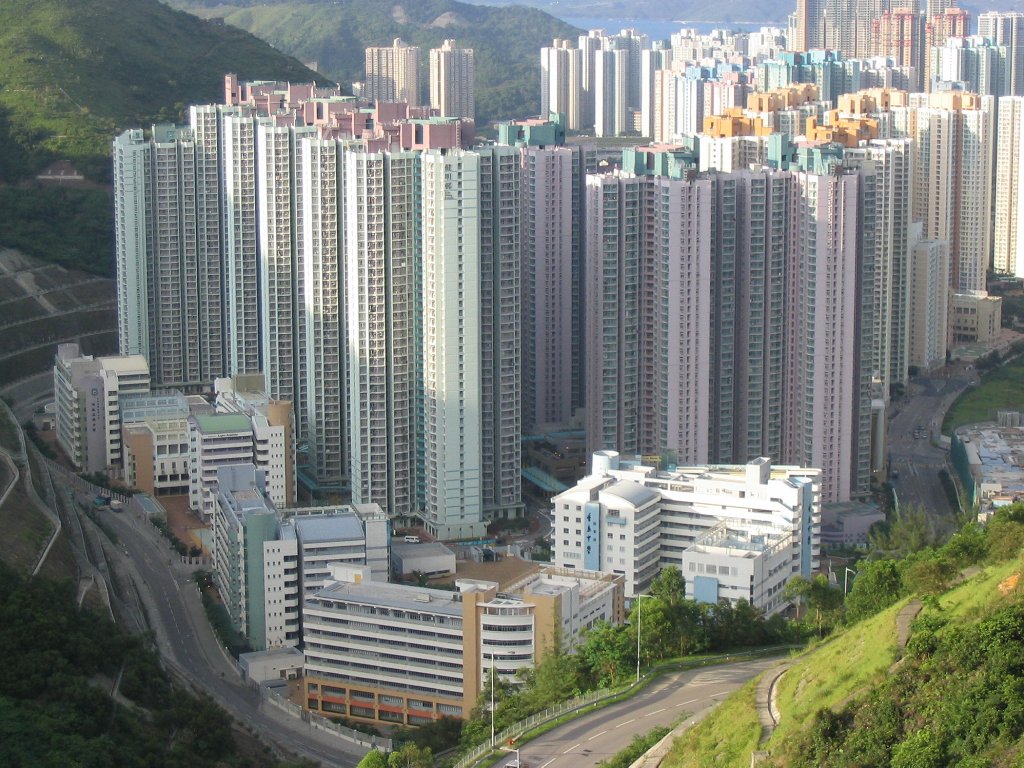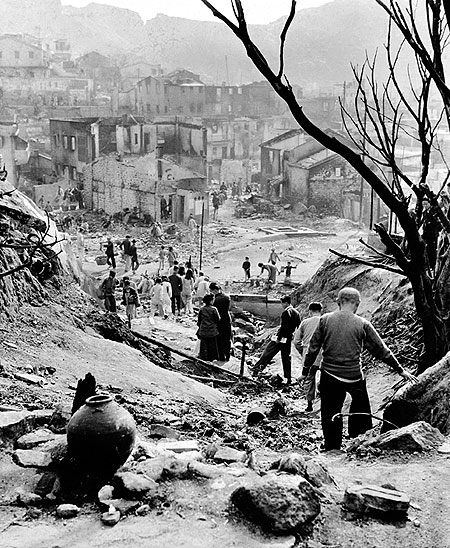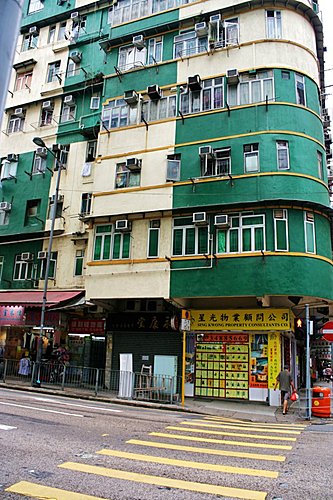|
Housing In Hong Kong
Housing in Hong Kong varies by location and income. More than 7 million people live on about 1,108 km2 (427 mi2) of land in the region, making it one of the List of countries and dependencies by population density, densest places in the world. History Housing by types In 2016 the total Demographics of Hong Kong, Hong Kong population was 7.3 million. According to the 2016 by-census, the population breakdown by type of housing was as follows: Segmentation In the high-end market, Victoria Peak, the Peak is ranked the 3rd Costliest cities in the world, most expensive city in the world in 2007 with a square foot per unit pricing of United States dollar, US $2,008 behind London and Monaco. Types Housing estates * Public housing in Hong Kong, Public housing estate * Private housing estates in Hong Kong, Private housing estate Traditional and historical housing * Tong Lau * Pang uk * Walled villages of Hong Kong * Kowloon Walled City Sub-standard housing * Subdiv ... [...More Info...] [...Related Items...] OR: [Wikipedia] [Google] [Baidu] |
Kin Ming Estate
Kin Ming Estate () is a public housing estate in Tiu Keng Leng, Tseung Kwan O, New Territories, Hong Kong, near MTR Tiu Keng Leng station. It is the eighth public housing estate in Tseung Kwan O and consists of ten housing blocks completed in 2003. Background Kin Ming Estate was formerly the site of Tiu Keng Leng Cottage Area, an area settled by Kuomintang Army in Hong Kong after Chinese Civil War The Chinese Civil War was fought between the Kuomintang-led Nationalist government, government of the Republic of China (1912–1949), Republic of China and the forces of the Chinese Communist Party (CCP). Armed conflict continued intermitt ... ended in 1949. After the area was demolished in 1997, a massive clearance, reclamation and redevelopment programme was carried out. The Tiu Keng Leng slope was flattened into two huge platforms to construct Kin Ming Estate and Choi Ming Court on the reclaimed land afterwards. Kin Ming Estate was originally a HOS court called Kin ... [...More Info...] [...Related Items...] OR: [Wikipedia] [Google] [Baidu] |
Private Housing Estates In Hong Kong
Private housing estate is a term used in Hong Kong for private mass housing—a housing estate built by a private Real estate development, developer, as opposed to a Public housing in Hong Kong, public housing estate built by the Hong Kong Housing Authority or the Hong Kong Housing Society. It is usually characterised by a cluster of high-rise buildings, with its own market or shopping mall. Mei Foo Sun Chuen, built by Mobil, is the earliest (1965) and largest by number of blocks (99). Early real estate development in Hong Kong followed the urban street pattern: single blocks packed along streets, most managed independently, with quality varying from block to block. Private housing estates, on the other hand, provide integrated management throughout the whole estate, attracting more affluent residents. Mei Foo Sun Chuen, Taikoo Shing, Whampoa Garden, and City One Shatin are early notable examples. More projects followed, and the idea became widely accepted as the middle class ... [...More Info...] [...Related Items...] OR: [Wikipedia] [Google] [Baidu] |
Home Ownership Scheme
The Home Ownership Scheme (HOS) is a subsidised-sale public housing in Hong Kong, public housing programme managed by the Hong Kong Housing Authority. It was instituted in the late 1970s as part of the government policy for public housing with two aims – to encourage better-off tenants of rental flats to vacate those flats for re-allocation to families in greater housing need; and also to provide an opportunity for home ownership to families unable to afford to buy in the private sector. Under the scheme, the government sells flats to eligible public housing tenants and to lower-income residents at prices below the market level, with discounts usually between 30 and 40 per cent. It restricts resale of the units in the second-hand market to other families who qualify or, on the open market, after payment of a premium equal to the updated value of the discount given on the original purchase. As an ancillary scheme, the Housing Authority also entered into arrangements with loca ... [...More Info...] [...Related Items...] OR: [Wikipedia] [Google] [Baidu] |
Government Of Hong Kong
The Government of the Hong Kong Special Administrative Region (commonly known as the Hong Kong Government or HKSAR Government) is the executive authorities of Hong Kong. It was established on 1 July 1997, following the handover of Hong Kong. The Chief Executive and the principal officials are appointed by the State Council of the People's Republic of China in accordance with the outcome of local processes. The Government Secretariat is headed by the Chief Secretary of Hong Kong, who is the most senior principal official of the Government. The Chief Secretary and the other secretaries jointly oversee the administration of Hong Kong, give advice to the Chief Executive as members of the Executive Council, and are accountable for their actions and policies to the Chief Executive and the Legislative Council. Under the " one country, two systems" constitutional principle, the Government is, in law, exclusively in charge of Hong Kong's internal affairs and specified external ... [...More Info...] [...Related Items...] OR: [Wikipedia] [Google] [Baidu] |
Shanty Town
A shanty town, squatter area, squatter settlement, or squatter camp is a settlement of improvised buildings known as shanties or shacks, typically made of materials such as mud and wood, or from cheap building materials such as corrugated iron sheets. A typical shanty town is squatted and, at least initially, lacks adequate infrastructure, including proper sanitation, safe water supply, electricity and street drainage. Over time, shanty towns may develop their infrastructure and even change into middle class neighbourhoods. They can be small informal settlements or they can house millions of people. First used in North America to designate a shack, the term ''shanty'' is likely derived from French ''chantier'' (construction site and associated low-level workers' quarters), or alternatively from Scottish Gaelic ''sean'' () meaning 'old' and ''taigh'' () meaning 'house old. Globally, some of the largest shanty towns are Ciudad Neza in Mexico, Orangi in Pakistan and Dharavi i ... [...More Info...] [...Related Items...] OR: [Wikipedia] [Google] [Baidu] |
Shek Kip Mei Fire
The Shek Kip Mei fire () took place in Hong Kong on 25 December 1953. It destroyed the Shek Kip Mei shanty town of immigrants from mainland China who had fled to Hong Kong, leaving over 53,000 people homeless. The area that was destroyed by the fire is bounded by Boundary St. and Tai Po Rd. After the fire, the governor Alexander Grantham Sir Alexander William George Herder Grantham, GCMG ( zh, c=葛量洪; 15 March 1899 – 4 October 1978) was a British colonial administrator who governed Hong Kong and Fiji. Early life, colonial administration career Grantham was born on ... launched a public housing programme to introduce the idea of "multi-storey building" for the immigrant population living there. The standardised new structures offered fire- and flood-resistant construction to previously vulnerable hut dwellers. The programme involved demolishing the rest of the makeshift houses left untouched by the fire, and the construction of the Shek Kip Mei Low-cost Housi ... [...More Info...] [...Related Items...] OR: [Wikipedia] [Google] [Baidu] |
Housing Estate
A housing estate (or sometimes housing complex, housing development, subdivision (land), subdivision or community) is a group of homes and other buildings built together as a single development. The exact form may vary from country to country. Popular throughout the United States and the United Kingdom, they often consist of single-family detached home, single family detached, semi-detached ("duplex") or Terraced house, terraced homes, with separate ownership of each dwelling unit. Building density depends on local planning norms. In major Asian cities, such as Hong Kong, Kuala Lumpur, Shanghai, Shenzhen, Singapore, Seoul, Taipei, and Tokyo, an estate may range from detached houses to high-density tower blocks with or without commercial facilities; in Europe and America, these may take the form of town housing, high-rise housing projects, or the older-style rows of terraced houses associated with the Industrial Revolution, detached or semi-detached houses with small plots o ... [...More Info...] [...Related Items...] OR: [Wikipedia] [Google] [Baidu] |
Public Housing
Public housing, also known as social housing, refers to Subsidized housing, subsidized or affordable housing provided in buildings that are usually owned and managed by local government, central government, nonprofit organizations or a combination thereof. The details, terminology, definitions of poverty, and other criteria for allocation may vary within different contexts, but the right to renting, rent such a home is generally rationed through some form of means-testing or through administrative measures of housing needs. One can regard social housing as a potential remedy for housing inequality. Within the OECD, social housing represents an average of 7% of national housing stock (2020), ranging from ~34% in the Netherlands to less than 1% in Colombia. In the United States, public housing developments are classified as housing projects that are owned by a housing authority or a low-income (project-based voucher) property. PBV are a component of a public housing agenc ... [...More Info...] [...Related Items...] OR: [Wikipedia] [Google] [Baidu] |
Small House Policy
The Small House Policy (SHP, ) was introduced in 1972 in Hong Kong. The objective was to improve the then prevailing low standard of housing in the rural areas of the New Territories. The policy allows an indigenous male villager who is 18 years old and is descended through the male line from a resident in 1898 of a recognized village in the New Territories, an entitlement to one concessionary grant during his lifetime to build one house. The policy has generated debates and calls for amendments to be made. History The Small House Policy has been in effect ever since 1972 to provide a once-in-a-lifetime small house grant for an indigenous villager who is "a male person at least 18 years old and is descended through the male line from a resident of 1898 of a recognized village (Ding, ) which is approved by the Director of Lands". An indigenous villager therefore enjoys small house concessionary rights (ding rights, ) in building a house of not more than three storeys nor mo ... [...More Info...] [...Related Items...] OR: [Wikipedia] [Google] [Baidu] |
Cage Home
A bedspace apartment (), also called cage home (), coffin cubicle, or coffin home (), is a type of residence that is only large enough for one loft bed surrounded by a metal cage. This type of residence originated in Hong Kong, and primarily exists in older urban districts such as Sham Shui Po, Mong Kok, To Kwa Wan, and Tai Kok Tsui. In 2007, there were approximately 53,200 people living in cage homes in Hong Kong. Generally, the residents are low-income people, including the elderly, drug users, and some low-skilled or unskilled labourers, and people who are physically or mentally ill. Reports from the Legislative Council of Hong Kong found that the people who lived in cage homes were those who did not qualify for social welfare, or subsidised rent or electricity. Most of the residents are male. Safety and other living conditions in bedspace apartments homes are often poor. While often called cage homes, they are categorised as "bedspace apartments" by the Hong Kong Gover ... [...More Info...] [...Related Items...] OR: [Wikipedia] [Google] [Baidu] |
Subdivided Flat
Subdivided flats (also called subdivided units) are Apartment, flats divided into two or more separate units to house more people. The flats' original partition walls are usually removed, and new ones are erected. New toilets and kitchens are installed, and internal Downspout, drains are added or altered. These updates can compromise the building's safety and hygiene. Hong Kong It is estimated that 280,000 people live in subdivided flats or other similarly undesirable conditions, mostly located in old residential buildings. According to a study by the Society for Community Organisation, Society for Community Organization, people living in subdivided flats are mainly unemployment, unemployed citizens, low-income families and new immigrants. The median living area per person of a subdivided flat was found to be 40 square feet for small suite and 30 square feet (2.8 sqm) for cubicle in 2009. Causes Housing shortage The insufficient supply of housing in Hong Kong is one of the ... [...More Info...] [...Related Items...] OR: [Wikipedia] [Google] [Baidu] |
Kowloon Walled City
Kowloon Walled City () was an extremely densely populated and largely lawless enclave of China within the boundaries of Kowloon City of former British Hong Kong. Built as an imperial Chinese Fortification, military fort, the walled city became a ''de jure'' enclave after the New Territories were leased to the United Kingdom in 1898. Its population increased dramatically after the end of the Japanese occupation of Hong Kong during World War II, attracting mostly refugees fleeing the renewed Chinese Civil War. By the late 1980s, the walled city contained roughly 35,000 residents within its territory of , or approximately four football fields; resulting in a staggering population density of over 3 million people per square mile. As a result of the absence of any widely recognized bureaucracy, the city's residents and businesses had no municipal codes to govern them. Enabled by the enclave's anarchic nature, trade in banned products thrived, ranging from narcotics to Dog meat#Hon ... [...More Info...] [...Related Items...] OR: [Wikipedia] [Google] [Baidu] |









